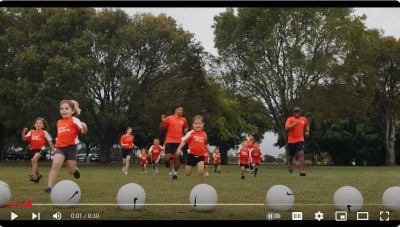(Keith Namiot, Head of Annuities, Guardian) - Saving for retirement can be challenging under everyday circumstances, and especially so during times of economic uncertainty and market volatility. For many, it can be a major concern that affects their financial health and overall well-being.
- Saving for retirement can be challenging under everyday circumstances, and especially so during times of economic uncertainty and market volatility. For many, it can be a major concern that affects their financial health and overall well-being.
According to recent data from Guardian’s 2025 Mind, Body, and Wallet® report, retirement-related concerns are the top financial stressors keeping Americans up at night, with nearly half of Americans indicating that having a source of guaranteed income in retirement and having retirement savings last as long as needed are their top financial stressors. One way to help alleviate the concerns associated with retirement income is to consider adding an annuity product to your retirement saving strategy.
Annuities can help diversify a retirement portfolio and offer a range of potential benefits, from protection against market loss to tax-deferred growth. They can also provide a guaranteed stream of income that lasts throughout retirement, offering greater financial confidence even in uncertain economic times.
There are several types of annuities to consider, including Single Premium Immediate Annuities (SPIAs) and Deferred Income Annuities (DIAs). Both types of these income-producing annuities can help alleviate concerns about outliving one’s nest egg and not maintaining an acquired standard of living in retirement.
Exploring a Registered Index-Linked Annuity
In addition to SPIAs and DIAs, Registered Index-Linked Annuities (RILAs) are another popular annuity solution. One example of a RILA, Guardian MarketPerform®, offers growth potential for retirement assets and tax deferral on investment growth while providing a level of downside protection during market downturns.
In addition, RILAs allow individuals the flexibility to choose from a select range of investment options including different indices. These protection-oriented growth solutions can be customized to suit the individual’s unique needs and timeline.
RILAs are a long-term investment product offered by prospectus only, and there are many factors to take into account when considering an annuity that should be discussed with a financial professional.
Supporting your retirement planning goals
With Guardian finding that 73% of Americans said they haven’t saved enough for retirement, and 69% regret not starting to save sooner, annuities can help address many of today’s retirement planning challenges. Whether you’re looking to accumulate more retirement assets with a level of protection or turn your retirement savings into a steady stream of lifetime income, people choose annuities as a way to build protection into their retirement nest egg, along with an IRA, 401(k), or pension.
Each annuity has unique benefits: SPIAs provide immediate, steady income; DIAs allow you to plan and lock in income for the future; and RILAs allow you to balance retirement planning, growth potential, and a level of protection. This can help enable you to continue striving towards growth goals while also knowing you have a certain level of protection in the face of turbulence.
Enabling overall well-being
Having an annuity within your retirement plan could play an important role in supporting not only your financial well-being but also your mental and physical health. According to Guardian’s report, for instance, 74% of US adults with poor physical health also report poor financial health.
Given the close connection between mental, physical, and financial well-being, setting a strong foundation for retirement and tapping into the power of an annuity can be an impactful way to support your overall wellness.
Getting started today
Working with a financial professional can help you develop the retirement savings strategy that’s right for you. They can listen to your needs and help determine what role an annuity could play in supporting your retirement goals, as well as which type of annuity might be the right fit.
June is Annuities Awareness Month, and the perfect time to start the conversation. Don’t wait to make a game plan to reach your retirement goals—reach out to a financial professional today.
To learn more, visit https://www.guardianlife.com/retirement.
Disclaimer
This product is sold by prospectus only. Please read the prospectus carefully before investing or sending money. The prospectus contains important information regarding this product, including fees and expenses. A prospectus may be obtained by calling 888-Guardian (888-482-7342). To download a prospectus, please visit guardianlife.com. Guardian MarketPerform® may not be available in all states.
Index Protection and Crediting Strategies are not a permanent part of the contract and may be removed due to circumstances beyond the control of GIAC. These circumstances and the special rules that govern how assets in a discontinued index interest account may be reallocated are outlined in the contract. We will not issue a Contract on February 29 in leap years. The Contract would be issued on the following business day.
If you do not remain invested in your IPCS options until the Term End Date, you could experience a loss that is greater than the level of protection the Protection Strategy provides or a gain that is lower than the return the Crediting Strategy provides on the Term End Date.
The renewal rates under each Strategy are based on the economic environment at the time renewal rates are declared and may be less favorable than those declared at issue. Renewal rates may be reduced as the contract approaches the end of the surrender charge period.
All guarantees are backed exclusively by the strength and claims paying ability of The Guardian Insurance & Annuity Company, Inc. (GIAC). Guardian MarketPerform® is issued by GIAC, a Delaware corporation, and distributed through Park Avenue Securities LLC (PAS). GIAC and PAS are wholly owned subsidiaries of The Guardian Life Insurance Company of America (Guardian). Guardian, GIAC and PAS are located at 10 Hudson Yards, New York, NY 10001. Product availability and features may vary by state.
Guardian MarketPerform® products are issued on contract forms 23-RILA, 23-RILA BUFFER, 23-RILA FRS, 23-RILA ROPDB, 23-RILA WSC, 23-RILA STRATEGY SPEC (or state equivalent forms). Product availability and features may vary by state.
8061022.1 (06/2027)
 - Grass-stained sneakers. A shiny, round ball. A handful of four-year-olds laughing and clapping nearby. And then, for Soccer Shots participant Ben, a big moment — his very first kick.
- Grass-stained sneakers. A shiny, round ball. A handful of four-year-olds laughing and clapping nearby. And then, for Soccer Shots participant Ben, a big moment — his very first kick. Soccer Shots now includes more than 340 franchises across the U.S. and Canada, with more than 600,000 children participating annually. Soccer Shots’ success goes beyond playing the game itself. The program inspires children to lead active, healthy lives, boosts their confidence, and teaches important life skills of leadership, teamwork, and respect.
Soccer Shots now includes more than 340 franchises across the U.S. and Canada, with more than 600,000 children participating annually. Soccer Shots’ success goes beyond playing the game itself. The program inspires children to lead active, healthy lives, boosts their confidence, and teaches important life skills of leadership, teamwork, and respect.


 - Maintaining good oral health is a crucial component of your overall well-being at any age, yet it becomes particularly important as we get older. Oral health is closely tied to not just our physical wellness but also our mental and financial well-being.
- Maintaining good oral health is a crucial component of your overall well-being at any age, yet it becomes particularly important as we get older. Oral health is closely tied to not just our physical wellness but also our mental and financial well-being.
 - Counting steps as a measure of exercise is misleading, and not a useful indicator of daily exercise goals, according to exercise physiologist
- Counting steps as a measure of exercise is misleading, and not a useful indicator of daily exercise goals, according to exercise physiologist 
 - A once-a-day pill called blarcamesine may slow memory loss and preserve independence—without the scary side effects or burdens of current treatments.
- A once-a-day pill called blarcamesine may slow memory loss and preserve independence—without the scary side effects or burdens of current treatments.
 - Saving for retirement can be challenging under everyday circumstances, and especially so during times of economic uncertainty and market volatility. For many, it can be a major concern that affects their financial health and overall well-being.
- Saving for retirement can be challenging under everyday circumstances, and especially so during times of economic uncertainty and market volatility. For many, it can be a major concern that affects their financial health and overall well-being.
 - As heatwaves intensify and storms grow more severe, the risk of prolonged power outages continues to climb. Forecasters across the country are sounding the alarm that extreme weather is no longer the exception, but the norm. The National Oceanic and Atmospheric Administration (NOAA) projects that a highly active Atlantic hurricane season will persist through 2025, with elevated potential for disruption to the power grid.
- As heatwaves intensify and storms grow more severe, the risk of prolonged power outages continues to climb. Forecasters across the country are sounding the alarm that extreme weather is no longer the exception, but the norm. The National Oceanic and Atmospheric Administration (NOAA) projects that a highly active Atlantic hurricane season will persist through 2025, with elevated potential for disruption to the power grid.